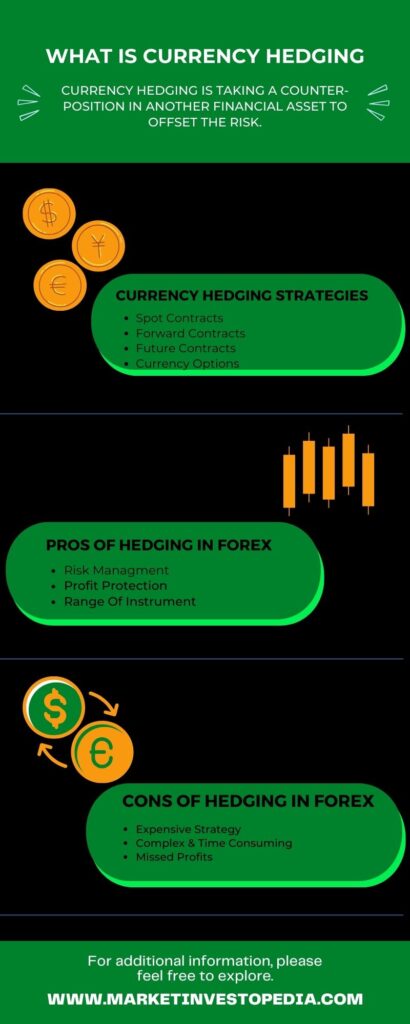Understanding the concept of forex hedging
You may have observed the difference between the price of goods and services compared to the past years. Is the price of bread loaf 20 years ago and in the present time is same? No right.
Have you wondered why? The bread is the same; the ingredients are the same; then what causes changes in its price? The answer is currency price fluctuations due to changes in various economic, social, political, and other factors.
The value of currencies also fluctuates over short periods. Let us say you are traveling from Australia to the US for 15 days. The current exchange rate of the pair USD/AUD is 0.60, and you have exchanged 10,000 AUD for 6000 USD to survive in the USA.
After 15 days, you are left with 3000 USD, and now you are returning to Australia, so you decided to exchange it. However, now the One USD= 0.65 AUD means that the USD value rises against the AUD. So you will receive less AUD than USD.
That’s how currency value changes. Many big organizations, Multinational Companies, Businesses, and institutions engage in foreign exchange activities that too in huge amounts. These small currency exchange rate fluctuations may result in their big losses. Therefore, these institutions use currency hedging strategies to counter these value fluctuations.

What is forex hedging?
Currency hedging is a popular strategy to deal with exchange rate fluctuation and offset the risk of loss. The main of this strategy is to protect individuals or organizations against unexpected price swings.
Hedging is the process of taking the opposite or counter-position in another financial asset to reduce the losses.
To hedge the currency risk, investment managers or corporations generally keep currency with them or invest in another currency that has a negative relationship with that currency. So that even if the value of the currency falls, it will not affect the transaction.
Let us have a look at a currency hedging example; suppose an American company has signed a contract with a European client worth 200,000 EURO. The client agrees to pay the company 200,000 EURO after one month at the time of delivery.
Suppose at the time of signing the contract, one EURO is equal to 1.06 US Dollars. However, after one month, the value of the USD increases against the EURO. Now, one EURO is equal to 1.02 USD, which means the difference is around 2000 USD.
In this case, the organization can go for forex hedging. It can buy a USD/EURO pair worth 200,000 when signing the contract to offset the risk. However, in this case, if the EURO increases against the USD after one month, then it will not benefit the company.
A quick glance
Hedging is the process of taking the opposite or counter-position in another financial asset to manage the losses.
- Spot contracts
- Forward Contracts
- Future contracts
- Currency Options
- Risk Management
- Profit Protection
- Range of Instruments
- Expensive Strategy
- Complex & Time
- Consuming
- Missed Profits
Restrictions
Currency Hedging Strategies
Individuals, companies, or institutions can hedge the currency risk differently. Here are some popular types of forex hedging strategies you can use for offsetting risk.
Spot contracts: A trader can hedge the currency risk by opening opposite positions in the same pair or co-related pairs using spot contracts.
Suppose a trade bought the USD/JPY pair of a standard lot, but now he feels that the value of the Japanese Yen will rise against the USD. So, in this case, he can buy one standard lot of JPY/USD pairs. In this way, he can manage the loss of one trade from the profit of another trade.
Forward Contracts: It is an agreement or contract of exchanging currencies on a predefined exchange rate on a future date. Companies widely use this method to safeguard their interest.
Suppose a company signed a contract of 100,000 USD from a Japanese client. The client agrees to pay in Yen after four months. The company can sign a contract to fix the exchange rate in this case. So, even if the price rises or falls, it will not affect the trade transaction.
Future contracts: It is among the popular currency hedging strategies to hedge interest rate risk or financial asset price fluctuation. Future contracts are quite similar to forward contracts.
However, the major difference is that terms and conditions like contract size, expiry date, and procedure rules can be altered or customized with forward contracts. While future contracts are more regulated, transparent, and uniform.
Currency Options: Options contract gives the right but not the obligation to buy or sell currency at a predefined rate on a future date. You can hedge the risk using put options or call options. The put option gives you the right to sell, while the call option gives you the right to buy at a specified exchange rate.

Pros of hedging in Forex
Risk Management: Foreign exchange involves significant risk. Individuals who are trading to make money and organizations that engage in activities for business purposes are affected by the exchange rate fluctuation. So, hedging can be a great tool to offset the currency exchange risk.
Profit Protection: The primary aim of hedging is managing losses; it is not a profit-making strategy. However, it can protect your profit, which may be affected by exchange rate fluctuation. Business organizations or companies daily engage in multiple foreign exchange transactions. The smallest change in the exchange rate may result in a huge impact on their profit. That’s where they can use hedging strategies.
Range of Instruments: Hedging can be done in numerous ways with many instruments. One can take the benefits of currency pairs or other correlations to hedge risk. US Dollars and Gold have a negative correlation.
Suppose a trader bought USD, but now he feels its price will fall. In this case, he can hedge the currency risk by opening a long position in Gold.
Cons of hedging in Forex
Expensive Strategy: For using hedging contracts and protecting yourself from future losses, you need to pay premiums to the contract parties. It may affect your overall profit. So, the process can be quite expensive for individuals.
Complex & time
Consuming: Hedging is a good strategy, but using the method requires knowledge and skills. Beginners or novice traders may find this strategy complex. In addition, it is a time and effort-taking process. One silly mistake may affect the overall results.
Missed Profits: Hedging is used to offset the risk due to changes in the exchange rate over time. However, by offsetting risk, you can also lose the chance of making money. So, whether the exchange rate moves in favor or against, you cannot benefit from it.
Restrictions: In many countries, there are several restrictions and regulations regarding hedging. So, to use this method, you need to be well-versed with the regulatory compliances.
Wrapping Up
We have understood currency hedging advantages and disadvantages. Remember, there are many tricks, techniques, and strategies in the forex market. Every technique has some pros and cons, like hedging.
However, the result depends on the effective implementation. Making and protecting profit are both crucial aspects of the forex market. Hedging enables you to manage the losses that occur due to changes in currency rates.
But to do so, you need to be well-versed in how the market works. It will help you in identifying what, when, and how to hedge and achieve the desired results.
